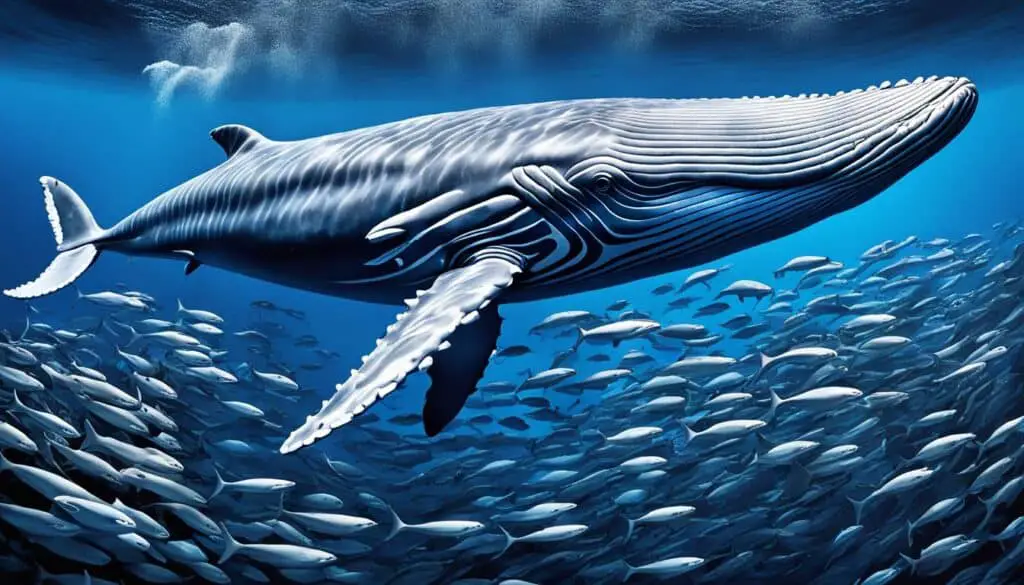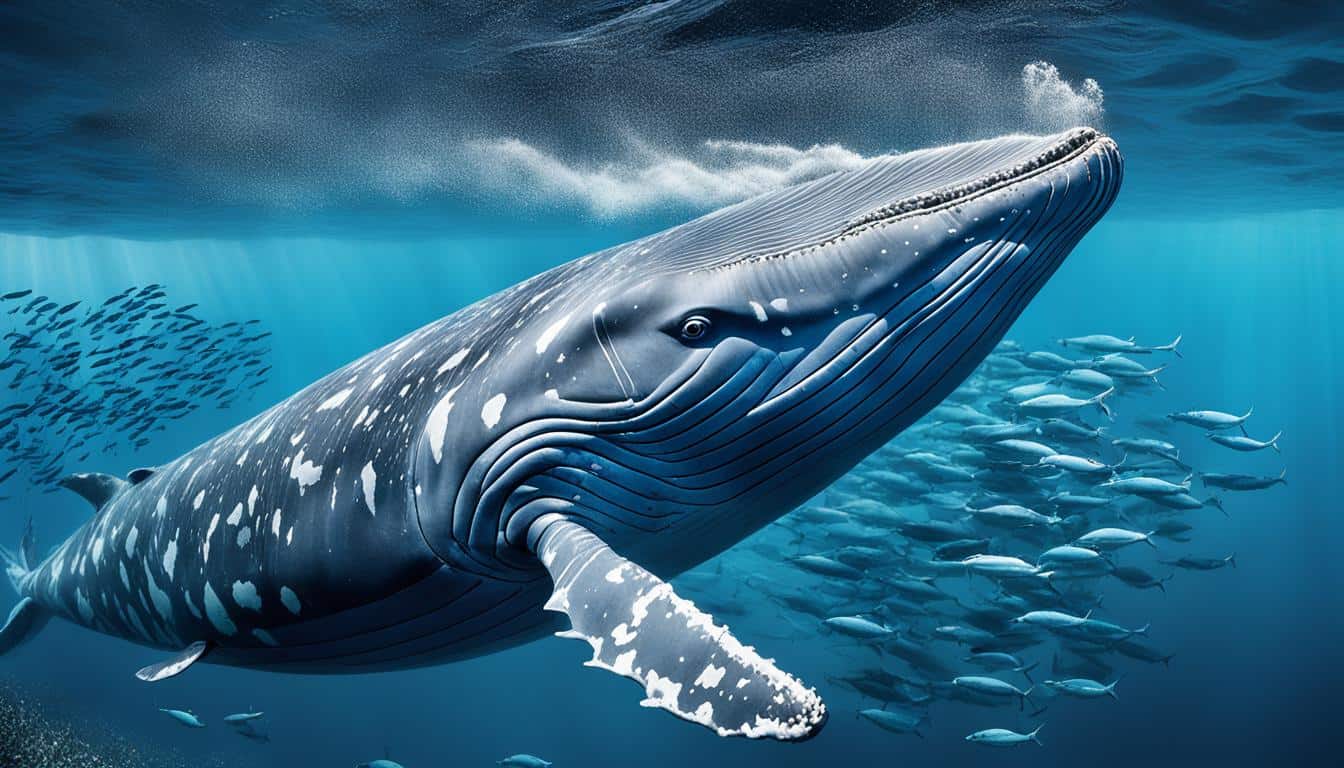The lifespan of a blue whale (Balaenoptera musculus) is truly fascinating. You might ask, how long do blue whales live? On average, they live from 70 to 90 years in the wild. Some might even reach 100 years. This is amazing for the biggest animal on Earth, which can be as long as 98 feet and weigh almost 200 tons.
It’s important to know what affects their age. Things like the environment and natural predators play a big role. This helps us understand how long they can live.
Understanding Blue Whale Lifespan
To understand how long blue whales live, we must look at their biology and their place in the ocean. These huge creatures eat tiny shrimp-like animals called krill. This diet affects their life cycle.
Blue whales move across the ocean, which impacts how long they live. In different places, they can live longer or shorter lives. Things like water temperature and food can change their health and lifespan.
Humans also affect blue whales. Things like ships and climate change can harm them. Knowing how long blue whales live helps scientists protect them. This is key for their survival.
By studying blue whales, we learn about their role in the ocean. This knowledge helps us protect them. It’s important for their future.
What is the lifespan of a blue whale?
Blue whales live a long time, which fascinates those who love the sea. These huge creatures go through different life stages. Their long lives show how important they are in the ocean.
Average Lifespan Estimates
Studies say blue whales live from 70 to 90 years. Some can even live over 100 years. The average life varies by subspecies and the environment they live in. For example, Antarctic blue whales can live up to 90 years, while pygmy blue whales live about 50 years.
Things like what they eat, where they live, and who they hang out with affect their lives. These factors play a big role in how long they live.
Longevity in the Wild

How long blue whales live in the wild is very important for their survival. They face many challenges in their natural homes. Things like finding enough food, where they live, and competing with other sea creatures affect their lifespan.
Small changes in their environment caused by humans can also harm their lives. Knowing this helps us understand how delicate their world is. It shows us how important it is for them to have a healthy home.
| Subspecies | Average Lifespan (Years) |
|---|---|
| Antarctic Blue Whale | Up to 90 |
| Common Blue Whale | 70-90 |
| Pygmy Blue Whale | Around 50 |
Factors Influencing Blue Whale Age
The lifespan of the blue whale is influenced by many factors. It’s important to understand these to know how long they live in the wild. Predators and human activities are big threats to their long lives.
Natural Predators and Threats
In the wild, blue whales have few natural threats. Orcas are their main predators. These whales sometimes hunt young or weak blue whales. But, orcas don’t have a big impact on their age compared to human threats.
Impact of Human Activities
Human actions greatly affect how long blue whales live. Threats include:
- Ship strikes: These can cause serious injuries or death.
- Pollution: It harms their health and ability to have babies.
- Climate change: Changes in ocean temperatures affect their food supply, impacting their health.
The International Union for Conservation of Nature (IUCN) says blue whales are endangered. This shows the big challenges they face in today’s oceans. These issues can shorten their lives a lot.
| Threat | Effect on Whale | Long-term Consequence |
|---|---|---|
| Ship Strikes | Injury or death | Reduced population numbers |
| Pollution | Health decline and reproductive issues | Increased mortality rate |
| Climate Change | Altered food supply | Decreased whale life expectancy |
Comparing Blue Whale Lifespan with Other Whales
It’s interesting to see how long blue whales live compared to other whales. Blue whales usually live longer than many others in the sea. For example, gray whales live about 50 to 70 years, and humpback whales live between 45 to 50 years. This shows how special blue whales are, thanks to their size and social ways.
Lifespan of Other Baleen Whales
Looking at other baleen whales, we see that big ones like blue whales have fewer natural enemies. This helps them live longer. They also do well in different ocean places, which can have lots or little food. But, gray and humpback whales face more challenges and dangers, which cuts their lives shorter.
Factors Affecting Lifespan Across Species
Many things affect how long whales live. Being big helps whales live longer, like blue whales. But, humans have hurt all whale groups, from ship collisions to loud noises. This shows why we need to protect not just blue whales but all whales in the sea.
FAQ
What is the average lifespan of a blue whale?
Blue whales usually live between 70 to 90 years in the wild. Some can even reach 100 years old.
How long do blue whales live in the wild?
Blue whales live about 70 to 90 years in the wild. But, their life span can change due to different environmental factors.
What factors affect the lifespan of blue whales?
Many things affect blue whale lifespan. These include the environment, food like krill, orcas, and human activities. Activities like shipping, fishing, and pollution also play a role.
Are blue whales’ lifespans affected by human activities?
Yes, human actions harm blue whales. Ship strikes, pollution, and climate change are big threats to their lives.
How does the lifespan of blue whales compare to other baleen whale species?
Blue whales live longer than many other baleen whales. For example, gray whales and humpback whales live about 50 to 70 years.
What is the significance of understanding blue whale age?
Knowing how long blue whales live is important. It helps scientists understand their population health and changes over time. This info guides conservation efforts.







